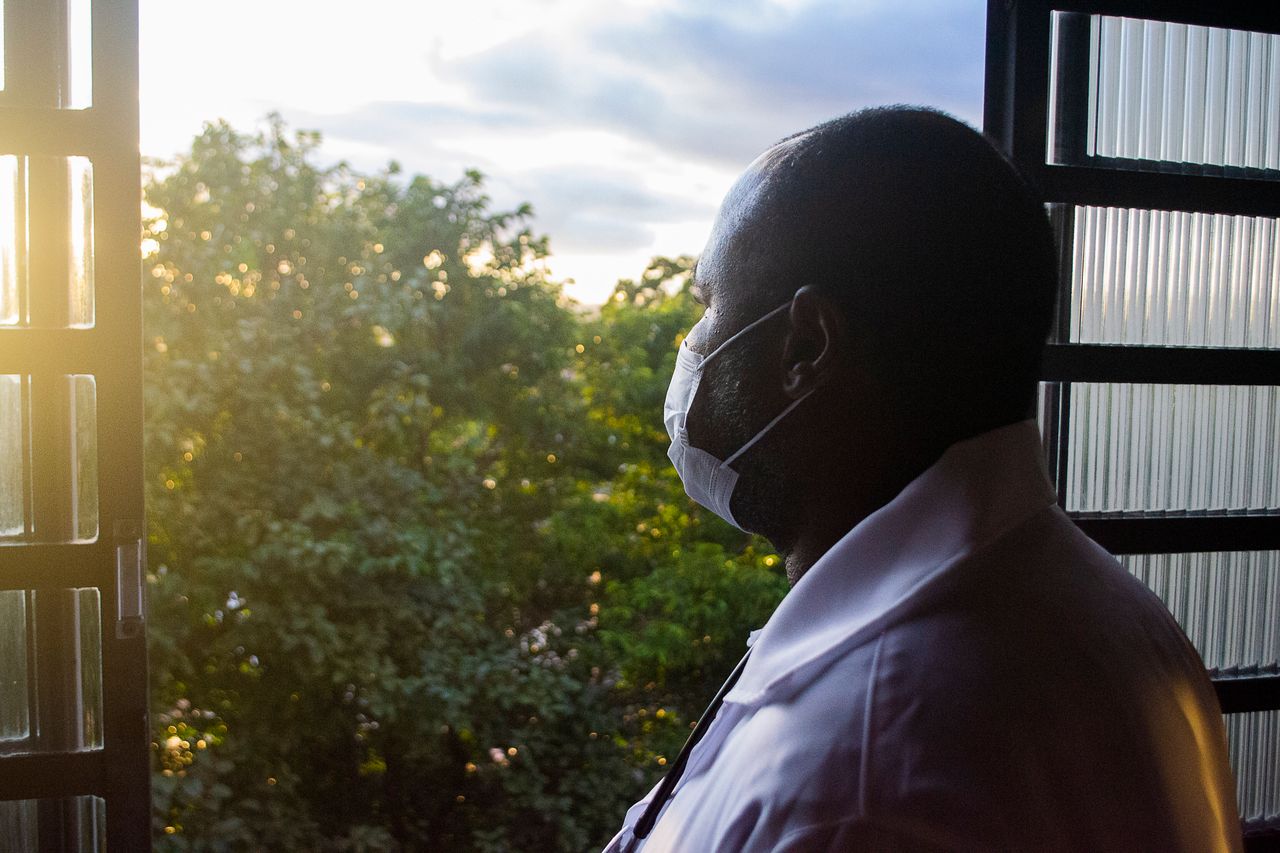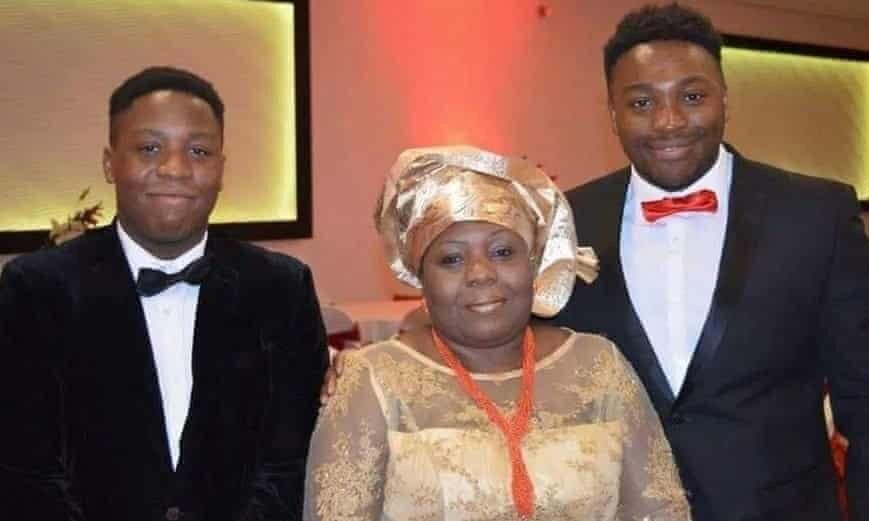As many as a third of coronavirus patients may be Black or Asian, nearly three times the 13% proportion of the UK population that they make up.
Some 14% of those with the most serious cases were Black and the same amount were Asian, according to the research, sparking calls for further probes into structural inequality and health outcomes.
The alarming figures come from a study of 2,000 people by the Intensive Care National Audit and Research Centre (ICNARC).
Lord Simon Woolley, chair of the landmark Race Disparity Audit’s advisory group, said this research reflected the need for the government to appoint a minister dedicated to furthering racial equality.
“This should be a wake up call for the government in regard to how it responds,” he told HuffPost UK.
“There must be a minister with responsibility for race that needs to sit around these decision making tables ensuring how they mitigate the disproportionate impact that is occurring for Black and minority communities; this has to be at a cabinet level.
″This is urgent and it’s right because in greater numbers it is our communities saving lives. So there’s a moral response to this as well as an economic and political response that the policy should close inequalities rather than ignore it.”
The study is thought to be the first analysis of its kind anywhere in the world looking at the ethnic breakdown of cases of Covid-19.
So, why are Black, Asian and minority ethnic people more susceptible to becoming critically ill as a result of coronavirus?
For starters, these communities are at greater risk of developing long-term health conditions. Over-65s in four ethnic groups – Pakistani, Bangladeshi, Gypsy and Irish Traveller, and Arab – have particularly poor health-related quality of life.
Studies also show people with south Asian backgrounds have a higher prevalence of diabetes and heart disease, which are two of the health conditions that puts people in the higher risk categories for Covid-19.
Meanwhile, Black people also have an increased risk of hypertension and diabetes.
Black and South Asian people are more likely to have a stroke than the general population, partly due to a greater likelihood of experiencing pre-hospital delays and limited awareness of stroke symptoms.

For some people, certain illnesses can be down to lifestyle. For example, many traditional foods in non-white communities are typically higher in sugar and starch, which can heighten the risk of developing conditions such as type two diabetes.
But poverty plays also plays a part. That, in itself, is anxiety inducing. Besides that, healthy food in the UK is three times more expensive than unhealthy food, a 2018 report by the Food Foundation highlights.
Given that BAME households are most likely to be in persistent poverty and food bank usage is soaring, they are usually priced out of being able to afford the most nutritionally rich food.
Black people who suffer from asthma, like Metroline bus driver Emeka Nyack Ihenacho, have higher mortality rates than white people.
All of these underlying health issues exacerbate the risk of a Covid-19 patient developing further complications.
The Race Disparity Audit in 2017 also revealed that Black adults reported the lowest ratings for life satisfaction – the feeling that things they do in life are worthwhile, and happiness.
People from BAME communities face a higher risk of serious mental illness due to the disproportionate impacts of socioeconomic factors such as poverty and marginalisation.
On that note, Black people are twice as likely than adults in other ethnic groups to have been sectioned under the Mental Health Act.
It is an established fact that stress and poor mental health can impact physical health. However, the correlation between racial discrimination, stress and physical illness is lesser known.
A recent US study shows the stress caused by experiencing constant racism can shorten the lives of Black people, by triggering genes that cause chronic inflammation and deadly illnesses.
The research, published in the journal Psychoneuroendocrinology, found genes that promote inflammation are expressed more often in Black people than their white counterparts.

Plus – how do you effectively self-isolate when you have less space at home to begin with?
Many individuals in south Asian families, for example, live in multi-generational households.
In addition to this, overcrowding affects ethnic minority households disproportionately, who are less likely to own their own home and most likely to rent social housing.
From school attainment to mental health, the impact can be dire and London in particular – where Covid-19 in the UK is most rife – has one of the highest rates of overcrowding of all regions of England.
Relative to the UK population overall, people living in households headed by someone in the Asian, Black or other ethnic groups are disproportionately likely to be on a low income.
And people in this situation cannot simply “get out of the hood”, even if they want to.
Most are not able to adhere to government self-isolation advice in the event that they contract Covid-19 or someone around them does. They are, for all intents and purposes, stuck and left to wrangle with an impossible enemy.
Moreover, Westminister’s lack of acknowledgement of these all-too-common circumstances suggests it may be, once again, out of touch with marginalised groups at the fringe of society.
Black, Asian and minority ethnic communities face other barriers to healthcare access.
Kayla Williams, 36-year-old mother of three, died on March 21, a day after paramedics were called to her home in Peckham and she was told to look after herself at home due to not being a “priority”.
Documents seen by the Guardian confirmed paramedics were treating her as a suspected Covid-19 case.
Williams’s case raised questions about how far her ethnicity impacted her treatment or lack thereof.
There is some evidence of unequal access to pre-hospital care for Black and minority ethnic communities.
A study by the Race Equality Foundation cited “stereotypical views among providers” were one reason for this disparity.
A spokesperson from the Equality and Human Rights Commission acknowledged that, while Covid-19 does not discriminate, it is impacting people differently.
“We continue to monitor how the pandemic and the response to it is affecting different groups who are already disadvantaged in other ways, and have made clear recommendations for how the UK and devolved governments should best respond to this unprecedented situation,” the spokesperson said.
“We remind all organisations that carry out public functions, such as government departments and regulators, of their legal responsibility under the public sector equality duty to consider how they are meeting the needs of, for example, disabled people, older people, and ethnic minorities.
“The implications of the emergency coronavirus legislation on different groups must be understood, reviewed and mitigated to ensure they are not further left behind.”

People of Black, Asian and minority ethnic backgrounds account for a large proportion of essential workers, which goes some way to explaining the racial disparity – non-white people are literally in the firing line.
The first four doctors who lost their lives were either of Black or south Asian descent: Adil El Tayar, Alfa Sa’adu, Habib Zaidi and Amged el-Hawrani.
Just hours after these fatalities were announced, it was announced that Black healthcare assistant Thomas Harvey had died after treating sick patients with only gloves for protection, and Areema Nasreen, a nurse who died at the hospital where she worked, had passed away.
People with Black and Asian backgrounds are overrepresented among the NHS workforce.
And some 20% of adult social care workers, like Carol Jamabo, are from Black, Asian or minority ethnic communities compared with 14% of the population, according to a 2018 report by the Department of Health & Social Care.
In London, more than a quarter of TfL staff are from minority backgrounds, according to its own data. This is double their proportion in the UK population.
Some 14 London transport workers have died of coronavirus, it was revealed on Wednesday. Bus drivers last week told HuffPost UK they were being forced to work without adequate personal protective equipment (PPE), and worried about being exposed to Covid-19 and not being paid if they don’t work.
Moreover, TfL’s own statistics reveal how huge its ethnicity pay gap is.
This exemplifies another sad reality; many of these essential roles, largely occupied by non-white people, are not well paid, and again poverty is a factor in poor health outcomes.

More than half the ICNARC study sample was from London and Birmingham areas where Black, Asian and minority groups are prevalent.
Based on this, some argue that the results are skewed and would invariably rank BAME groups disproportionately.
The Runnymede Trust, leading UK race equality think tank, on Friday published a report alongside the Centre on Dynamics of Ethnicity, highlighting the extent of race inequalities in the UK, arguing that Covid-19 is likely to widen the gap.
Dr Zubaida Haque, deputy director of Runnymede, told HuffPost UK: “We need to be cautious about this data for several reasons – there’s not enough disaggregation and information about the patients.
“However, it’s important to recognise that some Black and ethnic minority groups are more likely to be vulnerable to severe illness from Covid-19 because they are more likely to be among the poorest socio-economic groups, living in insecure and overcrowded housing and in low paid and precarious work.
“Some of this work is also bringing them into more contact with Covid-19 as BAME workers are also disproportionately represented in the NHS as well as some of the other key worker categories such as transport and delivery drivers, and social care workers.”
Haque called upon Public Health England to collate and analyse Covid-19 data by ethnicity, gender, age and other protected characteristics, in order to monitor racial disparities.
“Inequalities must be seen as a risk factor for severe illness from coronavirus,” she added.

Lord Woolley, who founded Operation Black Vote in 1996, also backed a campaign to name the new Birmingham Covid-19 hospital after Mary Seacole.
“That response is the lowest hanging fruit,” he said. “By naming it as that, it’s an acknowledgement not only of the contributions that Black and minority ethnic communities are making now – but have done since the inception of the NHS, particularly by the Windrush generation.”
